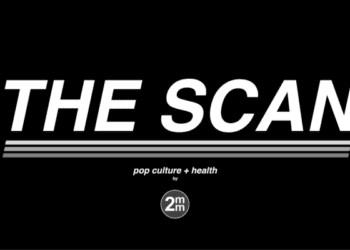Survival improved with lower transfusion threshold in acute upper intestinal bleeds
Jan 15th – A restrictive transfusion strategy (transfusion threshold at Hb=7) led to better outcomes in patients with upper gastrointestinal (UGI) bleeding.
 [tabs tab1=”2MM Rundown” tab2= “2MM Full Report” tab3=”About the Authors”]
[tabs tab1=”2MM Rundown” tab2= “2MM Full Report” tab3=”About the Authors”]
[tab]
Image: PD
1. A restrictive transfusion strategy (transfusion threshold at Hb=7) led to better outcomes in patients with upper gastrointestinal (UGI) bleeding.
2. This strategy reduced the risk of further bleeding, the need for rescue therapy, and the complication rate, all while improving the survival rate.
This study provides evidence to support current guidelines for lower transfusion thresholds in patients presenting with upper GI bleeding. This study had a number of strengths including: its randomization and prospective nature, as well as the fact that it is well-powered and generalizable to most patients with UGI bleeds. Limitations of this study include lack of generalizability to all patients with UGI bleeds, as patients with a low risk of rebleeding or a high risk of exsanguination were not included. Additionally, this study was not blinded, creating potential for bias. However, because the measured outcome was objective, it is unlikely that bias was introduced.
Click to read the study in NEJM
Click to read an accompanying editorial in NEJM
[/tab]
[tab]
Image: PD
1. A restrictive transfusion strategy (transfusion threshold at Hb=7) led to better outcomes in patients with upper gastrointestinal (UGI) bleeding.
2. This strategy reduced the risk of further bleeding, the need for rescue therapy, and the complication rate, all while improving the survival rate.
Primer: Gastrointestinal bleeding results in over 450,000 admissions in the US, often necessitating blood transfusion as part of resuscitation and treatment. Upper GI (UGI) bleeding commonly presents with hematemesis (bloody or coffee-ground vomiting) or melena and can be life-threatening if not managed quickly. The most common causes for UGI bleeding include esophageal varices and gastric or duodenal ulcers. Varices are a frequent complication of portal hypertension secondary to cirrhosis. In the past, the transfusion threshold was kept low to avoid increasing the patient’s blood pressure, which was thought to cause further bleeding. However, more recently, a higher transfusion threshold has been used – as high as Hb=10 at turn of the millennium. Current guidelines recommend a more restrictive strategy, but until now there has not been a high-quality RCT showing that a lower hemoglobin threshold would be beneficial for patients with upper GI bleeding.
Background reading:
This [prospective, randomized control] study: randomized 444 patients to a transfusion threshold of Hb=7 (restrictive-strategy group) and 445 patients to a transfusion threshold of Hb=9 (liberal-strategy group). The lower transfusion threshold resulted in a 45% relative risk reduction in 45-day mortality (p = .02). This was primarily due to a reduction in deaths secondary to uncontrollable bleeding. Complications occurred in 40% of patients assigned to the restrictive-strategy group, and 48% in the liberal-strategy group (p = .02) Furthermore, patients with liver cirrhosis in Child-Pugh class A or B had a significant survival advantage with a lower transfusion threshold.
In sum: This study provides evidence to support current guidelines for lower transfusion thresholds in patients presenting with upper GI bleeding. This study had a number of strengths including: its randomization and prospective nature, as well as the fact that it is well-powered and generalizable to most patients with UGI bleeds. Limitations of this study include lack of generalizability to all patients with UGI bleeds, as patients with a low risk of rebleeding or a high risk of exsanguination were not included. Additionally, this study was not blinded, creating potential for bias. However, because the measured outcome was objective, it is unlikely that bias was introduced.
Click to read the study in NEJM
Click to read an accompanying editorial in NEJM
By [AO] and [AH]
© 2013 2minutemedicine.com. All rights reserved. No works may be reproduced without written consent from 2minutemedicine.com. Disclaimer: We present factual information directly from peer reviewed medical journals. No post should be construed as medical advice and is not intended as such by the authors or by 2minutemedicine.com. PLEASE SEE A HEALTHCARE PROVIDER IN YOUR AREA IF YOU SEEK MEDICAL ADVICE OF ANY SORT. Content is produced in accordance with fair use copyrights solely and strictly for the purpose of teaching, news and criticism. No benefit, monetary or otherwise, is realized by any participants or the owner of this domain.
[/tab]
[tab]
 Asya Ofshteyn: Asya is a 3rd year M.D. candidate at University of California, San Francisco.
Asya Ofshteyn: Asya is a 3rd year M.D. candidate at University of California, San Francisco.
 Allen Ho: Allen is a 4th year M.D. candidate at Harvard Medical School.
Allen Ho: Allen is a 4th year M.D. candidate at Harvard Medical School.
[/tab]
[/tabs]




